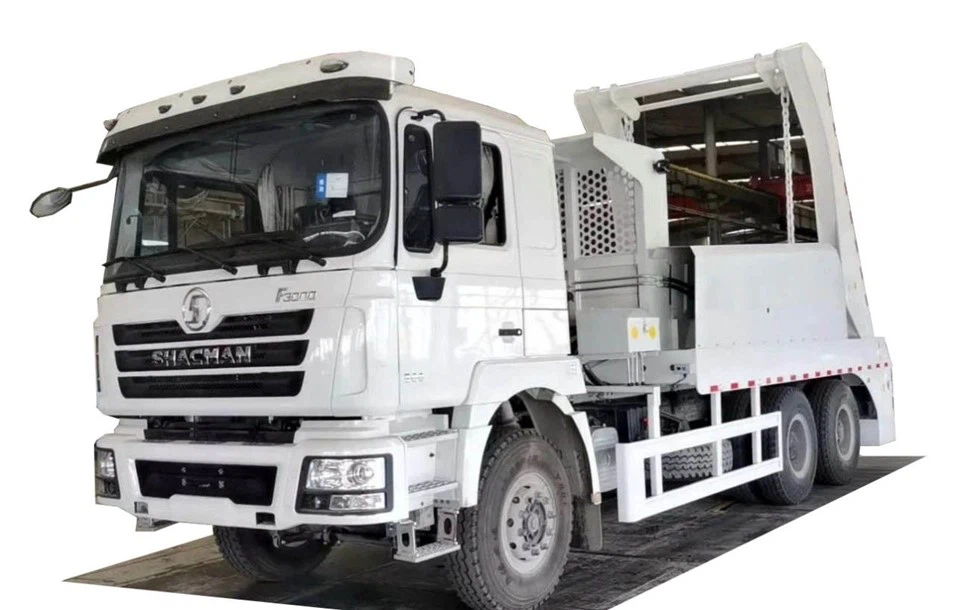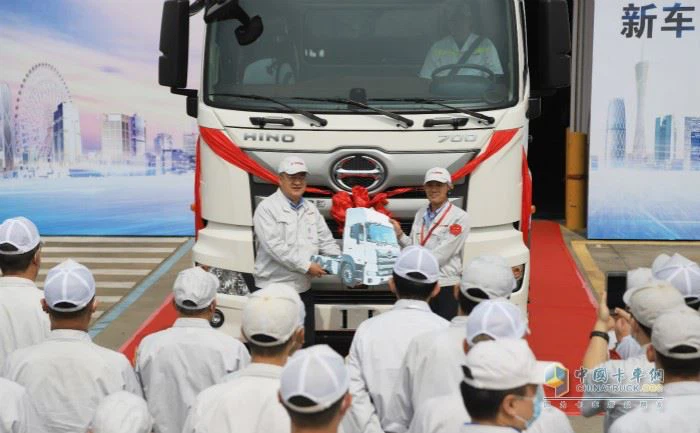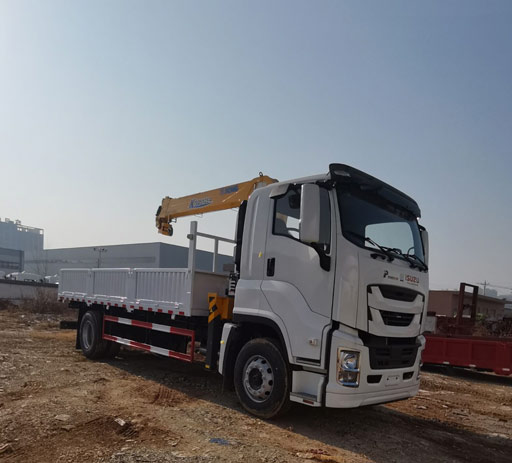Understanding Water Tanker Vehicles: A Comprehensive Guide

Introduction
Water tanker vehicles play a vital role in a variety of industries, from construction to agriculture. As essential instruments for transporting large quantities of water, they are crucial in regions facing water shortages or for operations that require significant water usage. This article delves into the specifics of water tanker vehicles, exploring their types, components, applications, maintenance, and more, providing you with a comprehensive understanding of their importance and functionality.
What is a Water Tanker Vehicle?
A water tanker vehicle is a specialized truck designed to transport water. These vehicles come in various sizes and configurations, ranging from small trucks used in urban areas to large tankers for industrial applications. They are equipped to carry potable and non-potable water depending on their design and intended use.
Types of Water Tanker Vehicles
Water tankers can be classified according to their size, purpose, and design:
- Small Water Tankers: Ideal for residential use, landscaping, and small construction sites.
- Medium Water Tankers: Suitable for commercial applications, including irrigation and road maintenance.
- Large Water Tankers: Used in firefighting, agriculture, and industrial applications, capable of carrying thousands of liters of water.
- Specialty Tankers: Designed for specific tasks, such as water with chemical additives for dust suppression.
Components of a Water Tanker Vehicle
Understanding the components of a water tanker vehicle can help you appreciate its operation and maintenance.
Tanker Body

The tanker body is the primary structure that holds the water. It can be constructed from various materials, including:
- Steel: Durable and robust, suitable for heavy-duty applications.
- Aluminum: Lightweight, which improves fuel efficiency.
- Polyethylene: Corrosion-resistant and less likely to contaminate water.
Pump System
The pump system is essential for filling and discharging water. Key elements include:
- Electric Pumps: Often used for lighter tasks, they run on electricity.
- Diesel Pumps: More powerful, suitable for heavy-duty operations.
Hoses and Nozzles
Hoses are used to discharge the water, and nozzles control the flow and distribution of water. Options may include:
- Flexible hoses: Easy to maneuver and connect.
- Fixed nozzles: For precise watering needs.

Fire Fighting Equipment
Some water tankers are equipped with specialized nozzles and pumps for fire-fighting applications. These can be crucial in emergency situations.
Control System
The control system allows operators to monitor and manage the water tanker’s functions, including filling and discharging processes.
Applications of Water Tanker Vehicles
Water tanker vehicles serve various sectors and applications:
Agriculture
In agriculture, water tankers provide essential irrigation to crops, especially in drought-prone areas. They can deliver water directly to fields or storage tanks, ensuring that farmers have the necessary resources for optimal crop production.
Construction Sites
Construction projects require water for various purposes such as mixing concrete, dust control, and site cleaning. Water tankers ensure a consistent water supply to facilitate these operations.
Emergency Services
During fires or natural disasters, water tankers are crucial for supplying water to combat flames, especially in areas where municipal water supplies are unavailable.
Municipal Water Supply
Cities use water tankers to provide water to residents, particularly in areas experiencing water shortages or infrastructure challenges.
Choosing the Right Water Tanker Vehicle

Selecting the right water tanker vehicle depends on various factors, including:
Capacity Requirements
Determine the volume of water you need to transport at a time. This can help narrow down your options from small to large tankers.
| Capacity | Application |
|---|---|
| 1,000 – 3,000 liters | Residential and landscaping |
| 3,000 – 5,000 liters | Commercial and agricultural |
| 5,000 liters and above | Industrial and firefighting |
Material of the Tank
Choose the tank’s material based on the quality of water to be transported. Steel is great for durability, while polyethylene is ideal for potable water to prevent leaching.
Pump Capability
Ensure that the pump system can manage the required flow rate for your specific application. Higher flow rates are necessary for firefighting, while lower rates might suffice for agriculture or residential use.
Regulatory Compliance
Check local regulations regarding the transport of water, especially if it’s intended for potable use. Ensure your vehicle meets health and safety standards.
Maintenance of Water Tanker Vehicles
Proper maintenance of water tanker vehicles is essential to ensure their longevity and optimal performance.
Regular Inspections
Conduct regular inspections to identify any wear and tear, especially in the pump system, hoses, and the tank’s interior. This can help prevent leaks and contamination.
Cleaning the Tank
Regularly clean the inside of the tank to prevent algae growth and sediment buildup, which can contaminate the water being transported.
Pump Maintenance
Pumps should be serviced regularly to ensure they function effectively. Check for any air leaks or blockages that could hinder performance.
Tire and Brake Checks
Ensure that tires are properly inflated and brakes are functioning efficiently to maintain safe driving conditions during transport.
Cost Considerations
The cost of acquiring a water tanker vehicle can vary widely based on its size, specifications, and features. Here are key factors to consider:
Initial Purchase Cost
Water tankers can range from a few thousand dollars for small units to over $100,000 for large, specialized vehicles. Comparing prices across different vendors can help you get the best deal.
Operating Costs
Consider fuel consumption, maintenance, and insurance as recurring expenses. Generally, larger vehicles incur higher fuel costs and maintenance requirements.
Financing Options
Explore financing options if an outright purchase is not feasible. Leasing can be a viable alternative that allows access to a water tanker without upfront costs.
Future of Water Tanker Vehicles
As technology evolves, the water tanker sector is also seeing advancements:
Electric and Hybrid Water Tankers
Electric and hybrid water tankers are emerging as eco-friendly options that reduce emissions and fuel consumption.
Smart Technology Integration
Future water tankers are likely to incorporate smart technology for better monitoring and management of water usage, improving efficiency and reducing waste.
Demand for Sustainable Practices
With the increasing focus on sustainability, water tankers are being designed to minimize water wastage and enhance conservation efforts.
FAQ Section
What is the typical capacity of a water tanker vehicle?
The capacity of a water tanker vehicle can range from 1,000 liters to over 15,000 liters, depending on the application and design of the vehicle.
How often do water tankers need maintenance?
Routine inspections should be conducted monthly, while more thorough maintenance, including pump servicing and tank cleaning, should occur bi-annually or annually.
Can water tankers transport potable water?
Yes, many water tankers are designed specifically for transporting potable water, but it’s essential to use appropriate materials and comply with health standards.
How do I choose the right water tanker for my needs?
Consider the capacity, material, pump capabilities, and specific application requirements when selecting a water tanker vehicle.
Are there any regulations for water tanker vehicles?
Yes, regulations may vary by location and application, especially regarding the transportation of potable water. It’s important to familiarize yourself with local laws.
What are the benefits of using a water tanker vehicle?
Water tankers provide a reliable and efficient way to transport large volumes of water, essential for various industries including agriculture, construction, and emergency services.
